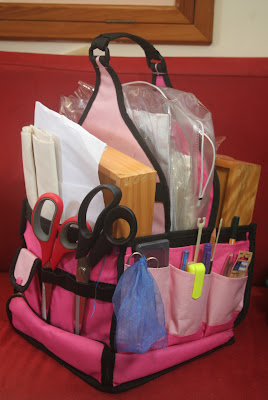From the manner in which a woman draws her thread at every stitch of her needlework, any other woman can surmise her thoughts.
~Honore de Balzac
Thanks in part to the industrial revolution and the rise of machines the age old skill of hand embroidery is dying. Girls and young women are rarely taught it and these days are rarely interested in learning it. It is easier and cheaper to have the embroidery done by machine, which is some cases is understandable in today's day of mass production.
The tradition of beautiful hand embroidered heirlooms, whether they be christening smocks, samplers or tablecloths, being passed down through the generations is slowly fading away. Which is really sad and a loss to future generations.
From the moment I saw my first piece of beautiful hand embroidery I knew that I wanted to master the art.
So last year I bought a simple piece of calico, embroidery hoops and my first needles and DMC threads. A friend of mine had some fantastic embroidery manuals which I scanned and saved. And I sat down one day and started teaching myself to embroider.
It's not as hard as you might think and more rewarding than you can imagine. Watching the colourful stitches slowly form a picture is an addiction which not even repeated needle pricks to your fingers can cure.
Here is a list of stitches I've learnt so far...
- Algerian Eye Stitch
- Back Stitch
- Back Stitch - Single Threaded
- Blanket Stitch
- Blanket Stitch Pinwheel
- Bullion Knot (still needs some practice)
- Chain Stitch
- Chain Stitch - Whipped
- Cross Stitch
- Detached Chain
- Fern Stitch
- French Knot
- Herringbone Stitch
- Lazy Daisy Stitch
- Lazy Daisy Stitch - Double
- Long and Short Stitch (took me a little while to master)
- Outline Stitch
- Satin Stitch
- Satin Stitch - Padded
- Seed Stitch
- Split Stitch
- Stem Stitch
- Stem Stitch - Whipped
These are mostly basic and easy to learn stitches but used in combination you can achieve some really pretty and complex results. The only limit? Your imagination!
Here are some pics of my earliest pieces done when I was learning these stitches.
(Stitches used in the above piece: Padded Satin, Long and Short, French Knots, Whipped Back Stitch, single Lazy Daisy Stitches)
(Stitches used in the above piece: Blanket, Algerian Eye, French Knot, Chain, Whipped Chain, Whipped Back Stitch, Satin, Lazy Daisy Double, Seed)



